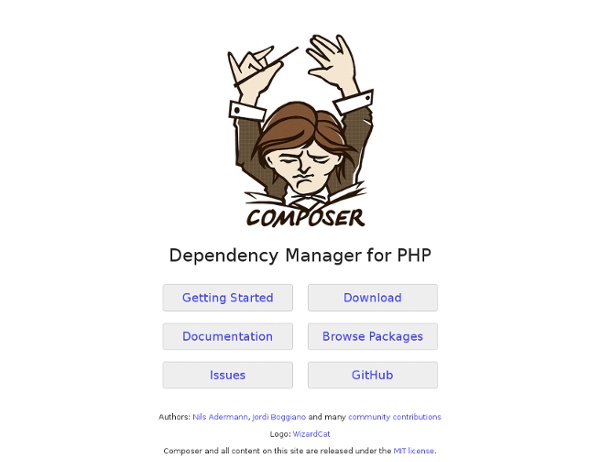



When in git Why Zend Framework » Evan's Blog Fabien Potencier just wrote an interesting post where he outlines what he believes to be the selling points of the Symfony project. First, let me point out that all of his points are 100% valid, and there’s no doubt that Symfony is a great framework. I have great respect for Fabien and the Symfony project as a whole. That said, my concern with Fabien’s post is that usually “selling points” for something imply that they are things that set something apart from the alternatives. Now, I’m sure Fabien had no ill-intentions when writing his post, but I do worry that some may misinterpret his post as a list of things that set Symfony apart from Zend Framework or other frameworks, which is simply not true. Allow me to address each of Fabien’s points from Zend Framework’s perspective: Symfony is not a framework but a project. Zend Framework is, and always has been a component framework (or, by the above definition, a “project”, not a “framework”). This is all true for Zend Framework as well.
phpUnderControl chrisboulton/php-resque Packagist WebPlatform.org — Your Web, documented php - Zend Framework 2 Stable Versions and Doctrine Dev Versions - Composer Configuration PHPLint Current version: 2.0_20140331 PHPLint is a validator and documentator for PHP 4 and PHP 5 programs. PHPLint extends the PHP language through transparent meta-code that can drive the parser to a even more strict check of the source. PHPLint is not simply a checker: it implements a new, strong typed, language implemented over the PHP language. A new 2.0 version of PHPLint, completely rewritten from scratch, is nearly complete. Documentation: FeaturesTutorialReference ManualSupport for phpDocumentorDocumentator Reference ManualFAQ (Frequently Asked Questions)License Libraries Browse all the PHP modules and the PHPLint standard library of packages. PHPLint on-line The WEB version of PHPLint. UPattern class evaluator On-line tool that helps in composing well formed patterns for the UPattern class. Bugs, missing features and to-do list Latest changes Detailed description of the additions, corrections and changes to the latest released version of the program. Download the program
» The Complete Illustrated One Page Bulletproof Diet (Upgraded Paleo) The Bulletproof Executive The Bulletproof Diet Roadmap is the best place to start if you’re unfamiliar with the diet or if you’re looking for an easy reference to the best foods for your body. This one-page download will help you: Easily navigate all aspects of the Bulletproof Diet on a single page (for free!)Get bonus tips on meal timing and fasting protocol Download the Bulletproof Diet Roadmap This one-page guide will help you navigate all aspects of the Bulletproof Diet on a single page Using the Bulletproof Diet Roadmap The Roadmap offers a number of food options on a spectrum of green (eat as much as you want!) Using the Roadmap is simple: Eat the stuff in the green zoneNo calorie counting. The Bulletproof Diet Roadmap also includes details about: When to eatExactly what foods and beverages to includeHow much to eat, including recommended serving sizes When you download the Bulletproof Diet Roadmap, you get a bonus printable: The Bulletproof Diet Cooking Methods Roadmap
PHP algorithms: Determining if an IP is within a specific range. « Paul Gregg I spend a lot of time lurking in the #PHP channel (efnet and freenode, please – no flamewars) and this topic is a commonly asked one that usually gets a simplified answer in the form of using strpos(), or at best an ip2long() in a greater than and less than answer. Unfortunately although people usually understand that an IP address is simply an unsigned 32 bit integer, and is easily determined, usually with $_SERVER['REMOTE_ADDR'], where the real challenge is – is in specifying the range within which they wish to check that IP address. IP ranges are usually specified in three common ways (in increasing complexity): Wildcard: 192.168.10. The Wildcard method, or “classy”, allows you to work at Class A (10.*.*.*), Class B (172.16.*.*) or Class C (192.168.10.*) levels of granularity which is how we used to do things in the old days (before the Web decided to make the Internet popular). Thus was born CIDR (yes, I’m skipping talking about Start-End ranges for now). Again, correct.